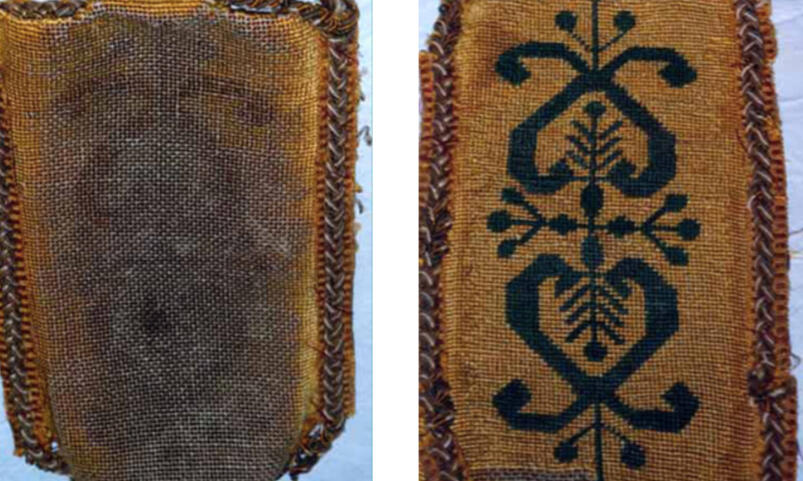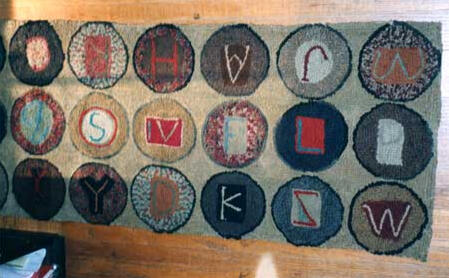textile conservation & restoration
Tina Kane Textile Conservation
ABOUT
T. Paul Kane began working at Tina Kane Textile Conservation in 1980. Since 2015, he has served as Principal, working in all phases of textile conservation and restoration, including installations and de-installations, wet cleaning, and on-site repair.
At the studio in New York's Hudson Valley, in Warwick, NY, he employs trained conservators and works with other professionals as needed.
Read more here about the history and qualifications of Tina Kane Textile Conservation or get in touch with questions.
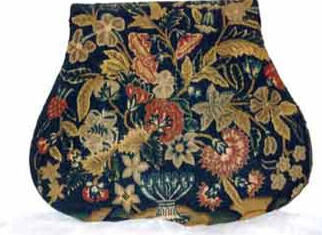
IMAGE: Reproductions by Tina Kane of a Queen Anne upholstery panel, modeled on an original
WATCH VIDEOS
IMAGE: See Tina Kane discuss the restoration of tapestry Christ The Redeemer at the Metropolitan Museum of Art in our Videos
SERVICES
Tina Kane Textile Conservation provides restoration, conservation, installation and deinstallation, mounting, shipping and other services for textiles of all kinds.

IMAGE: A seventeenth-century Verdure tapestry cleaned, conserved and installed.
We specialize in
flat tapestries (medieval to modern)
oriental carpets
flatweaves
embroidered or hooked rugs
quilts
tribal hangings
embroideries
needlepoint
upholstery panels
contemporary hangings
ethnographic material
others

IMAGE: Paul Kane and colleagues in the Warwick, NY studio.
Clientele
Clientele includes museums, galleries, universities, corporations, other conservation workshops as well as professional dealers, private collectors and non-specialists. The studio offers conservation service to a wide range of clients and welcomes individuals who have purchased or inherited a textile that needs treatment. No job is too small or too large.
Clients include
Guggenheim Asher Associates
Metropolitan Museum of Art, New York
National Gallery of Victoria, Australia
Yale University Art Gallery
Columbia University
Rockefeller University
Rockefeller Estate, Pocantico Hills, NY
Sydney Opera House, Australia
Becton-Dickinson Corporation
Jane Kahan Gallery
Isabella Stewart Gardner Museum
Galerie Chevalier
New York Yacht Club
The Explorer's Club
ConEdison Corporation of New York
View "BEFORE & AFTER" work samples
T. Paul Kane
T. Paul Kane began working at Tina Kane Textile Conservation in 1980. Since 2015, he has served as Principal, working in all phases of textile conservation and restoration, including installations and de-installations, wet cleaning, and on-site repair. At the studio in Warwick, NY, he employs trained conservators and works with other professionals as needed.
In 2018, Paul set up the Textile Conservation Centre, Inc. (TCC) in Australia, serving regional Victoria and the Greater Melbourne area. He is President of TCC and conservator-in-charge. TCC works on flat textiles and costumes of all kinds.
In 2017, Paul installed a show of historic camisoles, Undercover, at Fortuna Villa in Bendigo, Australia, drawing on the Clothing Collection of the Bendigo Historical Society.
MEMBERSHIP IN ORGANIZATIONS
American Institute for Conservation of Historic and Artistic Works (AIC)
Textile Society of America (TSA)
Australian Institute for the Conservation of Cultural Materials (AICCM)
Hajji Baba Club of New York
Publications & Research
In addition to his work in textile conservation, Paul also holds a PhD from Yale University and works at Vassar College as a Professor of English and Environmental Studies.
He has published numerous books and articles, and has been awarded many fellowships and prizes, including a Guggenheim Fellowship. See: Wikipedia, Paul Kane.
TINA KANE
Tina Kane was Conservator (ret.) in the Department of Textile Conservation at the Metropolitan Museum of Art in New York, where she worked part time from 1978 until 2010. While working for The Cloisters branch of the Museum, she and her colleagues completed the landmark restoration project of the renowned “Burgos” tapestry. In 2009, Tina was a primary organizer of an International Tapestry Symposium at the Museum to commemorate the Burgos project.
In addition to her museum work, Tina was also Principal of Tina Kane Textile Conservation, which she managed starting in 1973 in Warwick, New York. Between 2002 and 2010, she also served as an Adjunct Instructor in the Department of Medieval & Renaissance Studies and the English Department at Vassar College, where she taught a seminar (with Nancy Willard), “Medieval and Renaissance Tapestry and Text.”
Tina is the author of The Troyes Mémoire: The Making of a Medieval Tapestry (Boydell Press, 2010).
Visit her Wordpress blog here.
MEMBERSHIP IN ORGANIZATIONS
Textile Society of America
American Institute of Conservators
The Medieval Academy of America

TINA KANE
PRESS MENTIONS
Helping Your Old Rugs Lie Longer, The New York Times, Jan. 24, 1991.
Tapestry Tips and Praise From the U.S., The Age, Melbourne, Australia. Tuesday, August 3, 1982.
Publications & Research
“Mughal Indian carpets in the Collection of the Maharaja Sawai Man Singh II Museum, The City Palace of Jaipur.” Textile Society of America, Proceedings for the 13th Biennial Symposium, 2013
The Troyes Mémoire: The Making of a Medieval Tapestry. The Boydell Press, Woodbridge, UK, and Rochester, NY, 2010.
“The Troyes Mémoires: A Translation of a Script for a Late Medieval Choir Tapestry,” Textile Society of America, Proceedings for the 19th biennial Symposium, 2007
"Woven Stories: Narrative in Medieval and Early Renaissance Tapestry." American Tapestry Alliance, 2003.
“From Paint to Wool: Artist Weavers at the Victorian Tapestry Workshop.” Approaching Textiles, Various Viewpoints. Textile Society of America Biennial Symposium Proceedings. Earleville: Textile Society of America, 2001: 328-36.
"The Troyes Manuscript: Technology and Design in Fifteenth Century Tapestry." Creating Textiles, Makers, Methods and Markets. Textile Society of America Biennial Symposium Proceedings, Spring 1999:130-39.
“The Technology of Tapestry: 1400 to 2002.” Australian Tapestry: A History. Melbourne: Victorian Tapestry Workshop. Forthcoming.
"New Worlds from Old: Nineteenth Century Australian and American Landscapes." Antipodes (December 1998):133-35.
“Osmar White and Conqueror's Road: A Review and Personal Memoir.” Quadrant (December 1997): 80-83.
CONFERENCES & PAPERS DELIVERED
“Mughal Indian carpets in the Collection of the Maharaja Sawai Man Singh II Museum, The City Palace of Jaipur.” Textile Society of America Symposium. Washington, DC, September 22, 2012.
“The Art of Translating Text into Tapestry: Pierre Desrey and the Troyes Mémoire.” International Medieval Congress, Leeds, UK, 11 July, 2012.
“The Redemption tapestries: A brief history of Tapestry Conservation in the US.” Metropolitan Museum of Art, New York, February, 2012.
“Tapestry History and Conservation,” Vassar College, April 10, 2012.
“Redemption: The Restoration of the Cloisters “Burgos” Tapestry.” De Young Fine Arts Museums, San Francisco, October 26, 2011.
“The Troyes Mémoire: The Making of a Medieval Tapestry.” International Congress on Medieval Studies, Kalamazoo, MI, May 14, 2011.
“The Restoration of a Medieval Tapestry.” Bendigo Library, Bendigo, Australia, January 14, 2011.
“The Conservation of the Burgos Tapestry in the Cloisters Collection.” National Gallery of Victoria, Melbourne, Australia, July 25, 2010.
“The Restoration of the Burgos Tapestry.” Metropolitan Museum of Art, New York, 2009.
“Tapestry Conservation at the Metropolitan Museum of Art.” Minneapolis Institute of Art, 2006.
“The Technology of Tapestry: 1400 to 2002.” Victorian Tapestry Workshop, Melbourne, Australia, 2005.
Grants, Awards & Research
2010. Committee on Research, Vassar College: subvention grant for publication costs for The Troyes Mémoire.
2008. Committee on Research, Vassar College: grant for research travel in France.
2005. Committee on Research, Vassar College: grant for research travel in France.
1997. Independent research on 15th century tapestries and cartoons in Paris, Troyes, and Beauvais.
1997. Independent research in Rome and Florence on tapestry conservation facilities.
1995. Independent Research in central Turkey on contemporary kilim production.
1994. Metropolitan Museum of Art Travel Grant: to examine conservation facilities and tapestry collections in the Netherlands, Belgium, and France.
1994. Metropolitan Museum of Art Travel Grant: to research Flemish tapestry in the collection of the Palace of the Legion of Honor, San Francisco.
1984-85. Victorian Tapestry Workshop Artist-in-Residence, Melbourne, Australia.
SERVICES

Repair: compensates for damage to rugs and carpets and provides sufficient strength to allow continued use. This is less labor intensive than restoration.
Restoration: meticulous recreation of weave structure and design of tapestries, carpets and rugs.
Reproductions: some fabrics that have become so degraded that further wear endangers their survival can nonetheless be reproduced. The original textile can then be stored or exhibited. This option is particularly suitable for needlepoint or tapestry upholstery panels that are intended for future use.
Stabilizing: support systems can be provided for textiles that will be used for display. They can then be hung without danger of further structural damage.
Mounting: extremely fragile textiles can be mounted on a stretcher frame and placed inside a protective acrylic box which is suitable for both safe display and storage.
Pressure mounting: this system allows pieces that are too fragile or brittle for sewing to be safely preserved and displayed.
Strapping tapestries: tapestries require support when hanging in order to compensate for the stress on the fabric from the hanging weight. This is done by attaching strips of fabric to the back of the tapestry, perpendicular to the warp.
Linings: tapestries need linings to protect the back from accumulating dust. Some rugs should also be lined.
Hanging systems: Velcro webbing systems with wooden or aluminum slats are the primary means for hanging textiles.
"Museum quality" wet cleaning (any size): textiles are washed flat on a washing table using deionized water.
On-site installations and de-installations: tapestries and other textiles taken down or hung by a team of experienced professionals.
On-site surface cleaning: this is particularly suitable for large carpets and tapestries in public access areas or galleries.
On-site repair: minor repair can be done on-site on large carpets or rugs, avoiding the costs of handling and transportation and the inconvenience of removing the carpet for a period of time..
Emergency intervention: floods, steam pipe explosions, insect infestations or other emergencies in which textiles have been damaged can be dealt with promptly by experienced professionals..
Storage preparation: textiles that will be neither used nor displayed can be prepared for safe long-term storage.
.
treatment for all flat textiles, including
tapestries (medieval to modern)
oriental carpets
flatweaves: kilims, dhurries, native american blankets etc.
embroidered rugs: Portuguese needlepoints, sumac rugs etc.
hooked rugs
tribal hangings
quilts
embroideries
hooked rugs
needlepoint
upholstery panels
contemporary hangings
ethnographic material
other services include
Photography
Professional consulting services
Insurance, if requested
Travel, packaging and handling
Treatment proposals, condition reports and a precise schedule of costs are provided to each client upon request.
.
.
VIDEOS
The Burgos Tapestry: A Study in Conservation
(the met, Jan. 2010)
This video chronicles the amazing conservation and restoration of the sixteenth-century tapestry Christ is Born as Man's Redeemer, also known as the Burgos tapestry. Conservators Tina Kane and Alice Blohm describe the more than thirty years of painstaking restoration that they, along with other members of the Met's Textile Conservation department staff, performed on this work of art, which is more than 25 feet wide and 13 feet high.
.
Learn more about the tapestry, which is now on view at The Cloisters after more than thirty years.
.
Editor - Stephanie Wuertz
Camera - Jessica Glass and Wayne De La Roche
Sound - Kate Farrell and David Raymond
Archivist - Robin Schwalb
Post-Production Supervisor - Paul Caro
Additional Photography - Andrew Winslow
Transcribers - Nadja Hansen and Maxwell Mustardo
Special Thanks - Elizabeth Weinfield
Music - Parthenia
Restoration of Christ is Born as Man's Redeemer
(the met, Jan. 2010)
Alice Blohm, Conservator, New York; and Tina Kane, Conservator, The Metropolitan Museum of Art
.
This two-day symposium gathers leading international scholars to discuss a variety of topics related to the conservation of the tapestry Christ Is Born as Man's Redeemer in the collection of The Cloisters.
.
On the first day of this two-day symposium conservators and curators discuss the history of tapestry conservation at the Museum. The afternoon sessions feature scholars and specialist technicians who address the preservation of major historic tapestry collections in Europe. Topics for discussion include the restoration, conservation, and preparation of tapestries for exhibition. Museum Director Thomas P. Campbell introduces the event.
.
The second day of this two-day symposium includes panel discussions on the techniques used to clean, support, display, and handle historic tapestries. The impact of science and technology on conservation treatments is also considered.
RESTORATION EXAMPLES
Before & after photos of our work

Aubusson Tapestry: BEFORE

Aubusson Tapestry: BEFORE
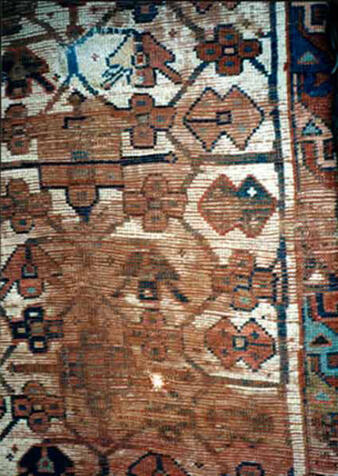
Caucasian Rug: BEFORE

Empire Upholstery: BEFORE
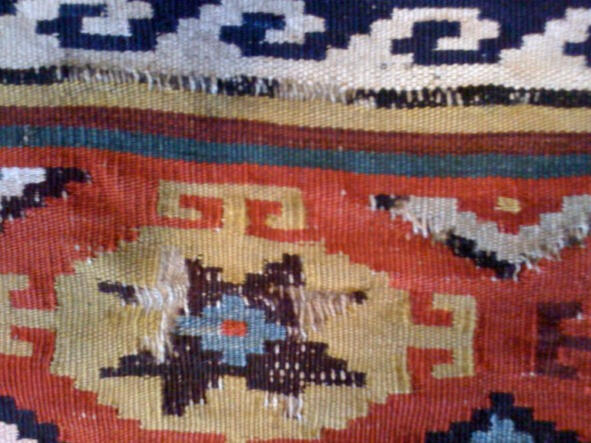
Qashqai kilim: BEFORE
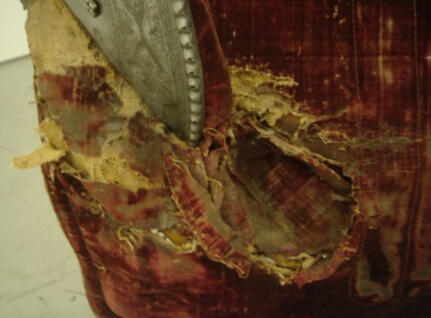
War Saddle: BEFORE

AFTER

AFTER

AFTER

AFTER

AFTER

AFTER, crated for shipping

